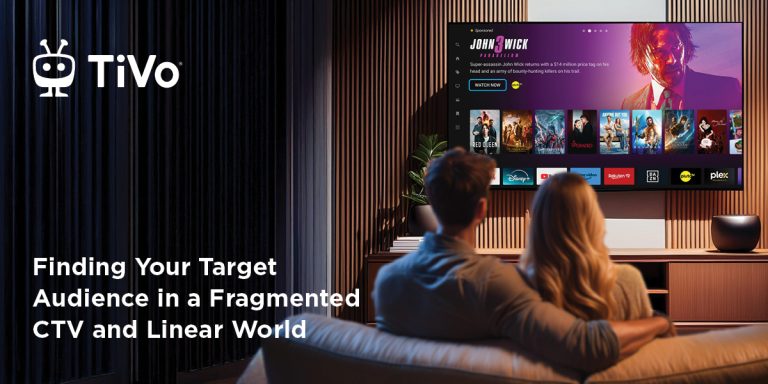By Craig Chinn, Senior Vice President of Advertising Sales, Americas, TiVo
Smart TVs are now considered the entertainment hub of the home. And many consumers are evolving their viewing habits, shifting away from “traditional,” linear TV consumption to streaming TV services, which in turn is transforming the advertising landscape. However, for most viewers though, they don’t see it as a choice between linear and streaming, it’s just TV.
Shifting to the Connected Landscape
Over the past five years, the global pandemic, rapid tech advancements, and a flood of premium content have accelerated the shift toward on-demand, flexible viewing. eMarketer predicts double-digit annual growth in CTV ad spending, potentially surpassing traditional TV ad expenditure soon. Meanwhile, traditional linear TV is evolving to keep up. This underscores the need for advertisers to adopt strategies that integrate both platforms. Linear TV provides a wider reach, and CTV allows better measurement and insights for key audiences. When combined, advertisers have the potential to reach the largest and most relevant audience possible.
Ask 100 people about their viewing habits, and most will likely mention on-demand or streaming content over linear TV. Recent research indicates that a significant portion of younger viewers, particularly those in the 16-24 age group, are shifting away from broadcast TV. While older viewers remain loyal to live TV, its share of viewing time is decreasing, particularly among the 55-65 age group. How do advertisers identify and engage with the right audiences for their brand, and where should they focus their efforts?
To do so, they must engage in the process that involves three critical steps: targeting the audience, finding them at scale, and delivering the right message at the right time. Which is where TiVo One comes into play.
With TiVo, advertisers can use our deterministic audience segments to reach households and leverage premium inventory to create high-impact moments. These moments include our Home Page Hero Ad whenever a user turns on their TV. With deep linking capability, we can drive the viewer to see a movie preview or click directly to watch it in-app or on Linear TV, creating an easy and seamless path to viewing content.
Data in this case is more than just extending reach — it’s about using data to target specific demographics with relevant content ads. Younger, digital-first generations like Gen Z and millennials are prime targets for CTV. CTV helps advertisers connect with audiences who are often harder to reach through traditional methods.
By leveraging data, advertisers can understand audience preferences, craft engaging campaigns, and create lasting connections. Aligning viewer content preferences with program placement maximizes advertising impact. It’s no longer just about who the audience is but ensuring ads are placed in the most relevant context.
The Road Ahead
Ultimately, TV is TV. Today’s viewers don’t care whether content arrives via linear broadcast or digital streaming—all they care about is quality content delivered to the big screen conveniently.
When CTV and linear TV are combined thoughtfully, using data, advertisers can achieve incremental reach and fill coverage gaps in a way that maximizes both effectiveness and efficiency. By embracing both, advertisers can keep pace with consumer habits and current innovations. The time to embrace this integrated approach is now.


Comments are closed.